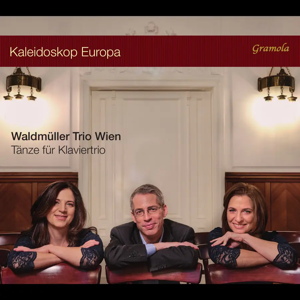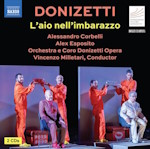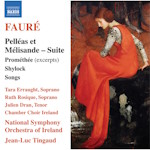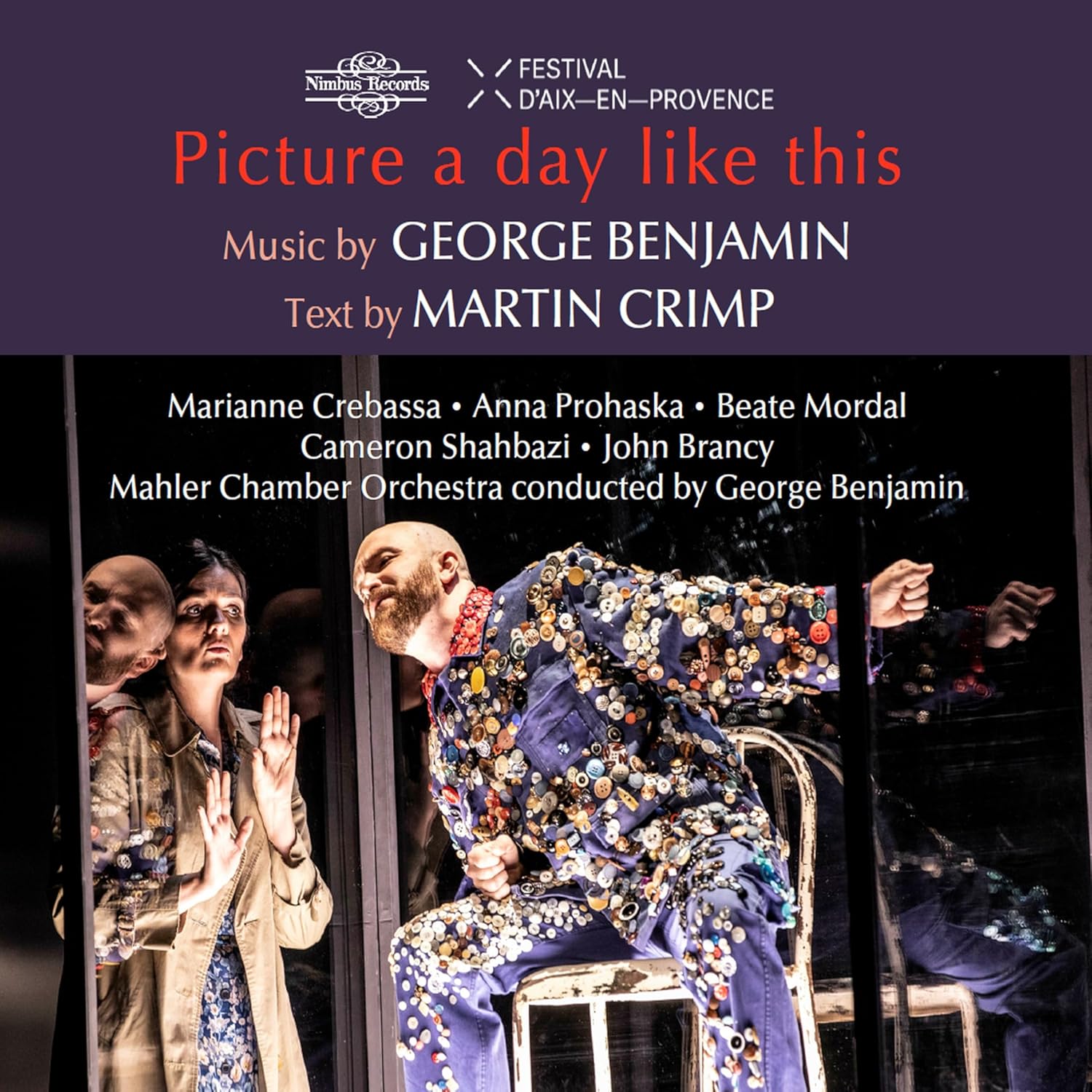
Kaleidoskop Europa: Tänze für Klaviertrio
Waldmüller Trio Wien
rec. 2022, Baden, Austria
Gramola 99317 [49]
In the booklet accompanying this very enjoyable disc, Johannes Leopold Mayer writes “Dancing has always been more than just rhythmic movement”. That is an important truth, which can readily be illustrated. In 1596, Sir John Davies, lawyer, politician and poet, first published his long poem Orchestra, or a Poem of Dancing, Judicially proving the true observation of time and measure, in the Authentic and laudable use of Dancing. The poem pretends to be an address to Odysseus’ wife Penelope, by one of her suitors, Antinous. Antinous finds dancing in the very creation of the world:
Dancing (bright Lady) then began to be,
When the first seeds whereof the world did spring
The Fire, Air, Earth, and Water did agree,
By Love’s persuasion, Nature’s mighty King,
To learn their first disordered combating:
And, in a dance such measure to observe,
As all the world their motion should preserve. (Stanza 17)
Davies/Antinous sees dance as the constant principle in the organization of the world thereafter:
Since when they still are carried in a round,
And changing come one in another’s place,
Yet do they neither mingle nor confound,
But every one doth keep the bounded space
Wherein the dance doth bid it turn or trace:
This wondrous miracle did Love devise
For Dauncing is Love’s proper exercise. (Stanza 18)
It would, of course, be inappropriate to believe that such considerations as these were consciously in the minds of the composers whose work is represented on this disc. Yet it is, I think, reasonable for us (perhaps sedentary) listeners to hear in their music echoes of the significance Sir John Davies finds in dance itself.
Only Kreisler’s ‘Marche Miniature Viennoise’ was originally written for piano trio. Some of the other works were originally scored for orchestra (such as Dvořák’s Slavonic Dances and Grieg’s Norwegian Dance), others for piano (e.g. Ravel’s Pavane pour une infante défunte) or for a chamber ensemble other than the piano trio (such as Beethoven’s string trio, Op. 8). Yet, with some intelligent and sensitive use of pre-existing arrangements, plus the skilful arrangements made by Martin Fröst, cellist of the Waldműller Trio Wien, the result is an attractive programme which is more various than it might have been.
Many of the composers and works in this programme are very familiar and I have therefore chosen to focus my attention on some of the lesser-known names. Franz Bendel (1833-1874) was born at Schônlinder in Bohemia and became a pianist and composer. He studied piano with Liszt in Weimar for five years from the age of twenty-two. In the 1860s he was teaching at Berlin’s Neue Akademie der Tonkunst. He wrote over 400 works, most of them for the piano (including a piano concerto), but also four mass settings and at least one symphony. He died of typhoid fever at the age of 41, while touring the USA as a pianist. I don’t know of any full CD devoted to his work, but his elegant and thoughtful ‘Hommage à Chopin’ can be heard on Jonathan Plowright’s disc with the same title (review) and his ‘Improvisation über das Wiegenlied von Johannes Brahms, Op. 141’, (Castigo 02483), played by Jens Hoffman. On the evidence of these two works, plus this ‘Souvenir d’Hongrie’, Bendel seems to me an interesting representative of the Nineteenth-century tradition of the virtuoso pianist-composer. I think he would merit a whole CD of his work.
Stephen Heller was a Hungarian pianist-composer, born in Pest. As a teenager he went to study with Czerny in Vienna. Illness derailed a planned European tour in his early twenties. However, by the age of 25 he was in Paris, making connections with figures such as Berlioz and Chopin. Elsewhere, though he seems never to have met Robert Schumann he corresponded with him extensively and, as a composer, was much influenced by him. In Alfred Einstein’s Music in the Romantic Era, London, 1947, Einstein describes Heller as “a Romantic miniaturist and idyllist” (p.220). Heller found a number of admirers, including the musicologist and minor composer, Hippolyte Barbedette (1827-1901) who wrote a book on Heller, Stephen Heller, His Life and Work (1877), in which he quotes approvingly a comment on Heller by François-Joseph Fétis (1784-1871) which sounds more like hagiography than criticism: “At a time of universal decadence, like the present, […] it is consoling to meet with a well-tempered mind, powerful enough to resist the popular impulse and to manifest the force of its individuality by work which bears the impress of genius, thoughtfulness, and constructive skill” (p.1). Barbedette himself makes the surprising pronouncement that “The works of Heller are at least as important as those of Chopin” (p.19); my quotations are taken from the English translation by Robert Brown-Borthwick which is available online. My own familiarity with Heller’s work is limited to hearings (on a streaming service) of recordings of selections played by Ilya Pruni (Hungaraton HCD 32400) and Luigi Gerosa (Dynamic CD57747). I find much of the work somewhat bland and lacking in individuality; to be fair, however, I must add that his Tarantella, as played here by the Waldmüller Trio Wien has an attractive vitality and merits its place in their well-chosen programme.
The Waldmüller Trio Wien acquit themselves admirably throughout. Whether playing a dance of Russian origin such as Tchaikovsky’s Trepak, or a polka (originating in Bohemia but spread across Europe through the Nineteenth Century), the Bulgarian Dance by Ottokar Novâček or, indeed a processional dance like Ravel’s Pavane pour une infante défunte they seem equally at home, articulating the rhythmic patterns precisely, investing emotionally in the work (though never overdoing this). Their playing is constantly delightful. Their name, incidentally, remembers – and honours – Ferdinand Georg Waldmüller (1793-1865), perhaps the most important major Austrian painter of the Nineteenth Century (who painted fine still lives (especially of flowers) and landscapes, as well as a portrait of Beethoven.
With their impeccable ensemble work and their assurance in brief solo passages as well as their shared sense of time and rhythmic patterns, the playing of The Waldmüller Trio Wien is a constant delight throughout this disc. It isn’t, I hope, merely fanciful to say that I identified with their shared joy in this music-making.
Glyn Pursglove
Buying this recording via a link below generates revenue for MWI, which helps the site remain free.



Contents
Fritz Kreisler (1875-1962)
Marche Miniature Viennoise (1925)
Antonin Dvořák (1841-1904)
Slavischer Tanz, op. 46/2 (1878)
Edward Grieg (1843-1907)
Norwegischer Tanz, Op.32/2 (1880), arr. Hans Stitt
Enrique Granados (1867-1916)
‘Andaluza’, from Danzas espanolas (1890), arr. Martin Först
Béla Bartok (1881-1945)
Rumãnische Volkstänze (1917) arr. Martin Först
Maurice Ravel (1875-1937)
Pavane pour une infante défunte (1899) arr. Martin Först
Peter Il’yich Tchaikovsky (1840-1893)
Trepak from The Nutcracker (1892) arr. Martin Först
Johannes Brahms (1833-1897)
Hungarian Dance, No. 6, from 21 Hungarian Dances (1879) arr. Hugo Riesenfeld.
Franz Bendel (1833-1874)
Souvenir d’Hongrie – Polka caracteristique (1873) arr. Nikolaj Hansen
Stephen Heller (1813-1888)
Tarantella (1855)
Ottokar Novâček (1866-1900)
Bulgarischer Tanz, op. 6/1 (1897)
Ludwig van Beethoven (1770-1827)
‘Menuett’ from Serenade in D major, op. 8 for Violin, Viola and Cello, aka String Trio No. 2 (1797) arr. Heinrich Böhme
Franz Schubert (1797-1828)
Vier Deutsche Tänze from 18 German Dances & Ecossaises, op. 33 (1823-24) arr. Paul Zilcher.
Josef Strauss (1827-1870)
In der Heimat, Polka Mazur, op. 231 (1868) arr. Martin Först.

















